The effect of artificial aeration on phytoplankton growth in a small eutrophic lake in North Dakota
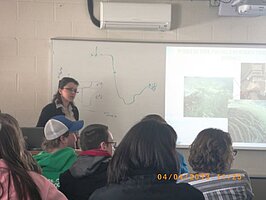
Veselina Valkov is a PhD student in the Environmental Conservation Science program at North Dakota State University. She holds a Master of Science degree in Ecology and Environment Protection from the Technical University-Varna, Bulgaria. She worked for the Institute of Oceanology - Bulgarian Academy of Science and focused on phytoplankton ecology. Veselina’s current research address the impacts of artificial aeration on phytoplankton distribution and diversity in a eutrophic lake.
Email: veselina.valkov@ndsu.edu
Phone: 701-231-7051
Fellow: Veselina A. Valkov
Advisor: Dr. Wei Lin, Associate Professor, Department of Civil Engineering North Dakota State University
Degree Progress: PhD in the Environmental Conservation Science
The effect of artificial aeration on phytoplankton growth in a small eutrophic lake in North Dakota
Eutrophication is a process by which lakes and reservoirs become more productive as a result of increased concentrations of nutrient, especially nitrogen (N) and phosphorus (P). Eutrophication occurs naturally; however, human activities that cause increased nutrient release accelerate eutrophication. This process is defined as cultural eutrophication. The high concentrations of N and P stimulate growth and blooms of phytoplankton, periphyton, and macrophytes. The common consequences of water quality changes related to eutrophication, and particularly to an increase of phytoplankton growth, include a decrease of water transparency, increase of diurnal dissolved oxygen (DO) variation, anoxic condition in water bottom layer, and shifts of phytoplankton composition to bloom-forming species of certain classes, such as Cyanobacteria. Species such as Aphanizomenon sp., Anabaena sp. and Microcystis sp. are among the most common Cyanobacteria in eutrophic lakes and reservoirs. As reported in the “North Dakota 2012 Integrated Section 305(b) Water Quality Assessment Report”, 45% of assessed lakes and reservoirs are eutrophic making eutrophication a serious water quality concern in North Dakota.
Artificial aeration is one of the methods used as a management technique to increase DO concentration in the water column and to prevent thermal stratification. On one hand, the introduced air become dissolved in the water, and on the other hand, lake circulation caused by artificial aeration reduces, or prevents the stratification and increases natural mixing of oxygen rich surface waters with oxygen poor bottom water. Improved DO concentrations in turn prevent fish kill and loss of suitable habitats for aquatic biota. Recently, artificial aeration has been an adopted method to control algal and especially Cyanobacteria blooms.
The remediation of water quality problems, including reduction of Cyanobacteria blooms, using an aeration system requires an understanding of the factors favoring Cyanobacteria dominance in lakes. The two most competitive advantages of Cyanobacteria are their ability to regulate buoyancy and the capability of some species to fix atmosphere nitrogen N2. Buoyancy regulation of many Cyanobacteria through the production of gas vesicles is an ecologically important mechanism enabling them to adjust their vertical position in the water column. The rate of sinking and upward movement, however, depends on colony size and cell density of the species. In addition to buoyancy regulation, nitrogen fixation influences the growth of Cyanobacteria such as Aphanizomenon sp. and Anabaena sp. In fact, the N2-fixation capability provides N2-fixing species with a competitive advantage over the other phytoplankton species when the nitrogen concentrations in water are limited.
The aim of this study is to examine the effects of artificial destratification on Cyanobacteria growth through changing the nutrient availability.
The main goal of this research is to evaluate the impact of artificial aeration on nutrient release and on phytoplankton growth and population dynamics (total biomass, species variation and diversity) under aerated and non-aerated condition. Specifically, the research will address:
* effect of artificial aeration on the release of nutrients nitrogen (N) and phosphorus (P);
* effect of artificial aeration on phytoplankton growth and population dynamic through change of nutrient availability;
* effect of artificial aeration on Cyanobacteria growth and dominance
Project Objectives:
The purpose of this research is to determine variation of phytoplankton species in response to physical and chemical environmental variables. More specifically this research aims to evaluate the effect of artificial aeration on the change in dominance of certain phytoplankton species. The sampling plan was developed using a spatial and temporal design during the summer 2010, 2011 and 2012.
Progress:
To achieve the goals of study the impact of artificial aeration on nutrient release (N and P) on phytoplankton growth, field water sampling and laboratory analyses were conducted from artificially aerated lake. Heinrich-Martin Dam is located in LaMore County, ND with area of 0.07 km2 and 10 m maximum depth. To evaluate the impact of artificial aeration the water samples were taken under aerated and non-aerated condition during the summer growing seasons of 2010, 2011 and 2012, from designed sites and multiple depths. The sampling and measurements frequency depended on operational condition of artificial aeration: biweekly under aerated and weekly under non-aerated condition. The laboratory analyses for all nitrogen and phosphorus species were conducted within 24h fallowing Standard Methods for the Examination of Water in the Environmental Lab in NDSU. Changes in phytoplankton biomass were estimated by photosynthetic pigment Chlorophyll-a ethanol extraction and spectrophotometric determination The relative abundance phytoplankton population was detected through species identification and numeration under Inverted Microscope Advanced Imaging and Microscopy Core Laboratory, at NDSU. Methodology for phytoplankton biovolume estimation and calculations was developed and applied to calculate phytoplankton species relative and total abundance.
In addition, field measurements of water temperature, DO, pH, conductivity and nutrient (nitrogen and phosphorus) concentrations water samples were also taken to identify how a change in nutrient concentration impact the seasonality of phytoplankton.
Results and Preliminary Conclusions:
Artificial aeration was proven to eliminate stratification and maintain DO concentrations above 4 mg/l during the summer mounts in 2010. Developing of stratification due to stopping of aeration resulted in rapid drop of DO concentrations on the bottom of the lake indicating intensive consumption of DO as a result of microbiological decomposition. The DO deficit on the surface was higher during aerated period, suggesting an increased DO consumption.
The destratification reduced nutrient Total Nitrogen and Total Phosphorus loading in the lake, but the internal loading was not eliminated. The problem with the internal nutrient load was not solved. Mixing from the artificial destratification continuously provided more nutrients available for phytoplankton growth. Higher phytoplankton growth was observed under the aerated condition. The observed ambient low N:P ratio (nitrogen limited condition) should promote N-fixing Cyanobacteria species such as Aphanizomenon sp. and Anabaena sp. However, the N2 -Cyanobacteria species had not been found to dominate in 2010. Nevertheless, in 2011 under aerated condition an intensive bloom of Aphanizomenon sp. was observed. The fallowing termination of aeration and developing of weak stratification caused accumulation of TDIN and SRP in the hypolimnion and decresing of available nutrients for the phytoplankton growth on the surface. The N2-fixers has been found preferably to utilize “cheaper”, dissolved in water, available, DIN and deplete these sources before switching to the energy-expensive process of N2 fixation. The cyanobacteria also have a general slow growth rate, but fast growth rate at low DIN concentrations than the other groups of algae. These predict better competition for DIN in nitrogen limited lakes.
However, the N2-Cyanobacteria have been found to be poorer competitors for phosphorus. When the aeration was stopped, the SRP become limited nutrient for N2-fixing Cyanobacteria growth that caused collapse of their bloom.
Significance:
The long-term goal of this research is to apply knowledge on the variation of phytoplankton population distribution and diversity contributes to a better understanding of ecological status of eutrophic lakes. Understanding the effect of artificial destratification on nutrient availability and its impact on the physiology of Cyanobacteria species is considered necessary for the development of artificial destratification as a remediation technique to control problematic Cyanobacteria blooms.
Relevant Publications:
Veselina Valkov “Impacts of artificial destratification on water quality and phytoplankton growth in an eutrophic lake” 85th Annual ND Water Pollution Control conference, Grand Forks, 2013
Veselina Valkov “Temporal-spatial distribution (dynamics) of phytoplankton and diversity in relation to lake physical and chemical condition” poster at presentation at ECS Poster Session and Recruiting Fair, Fargo, North Dakota 2011/2012
Veselina Valkov “Temporal-spatial distribution (dynamics) of phytoplankton and diversity in relation to lake physical and chemical condition “presentation at International Student Prairie Conference Winnipeg, Canada 2010 and 2013 and Fargo, North Dakota 2011
Veselina Valkov “Temporal-spatial distribution (dynamics) of phytoplankton and diversity in relation to lake physical and chemical condition “presentation at ND AWWA Young Professional Poster Competition Fargo, North Dakota, 2010 and Bismarck, 2011
Veselina Valkov “The effect of artificial aeration on phytoplankton growth in a small eutrophic lake in North Dakota” presentation at River Watch Spring Workshop, Kathryn, North Dakota, 2013
Pictures from Heinrich-Martin Dam during sampling events.
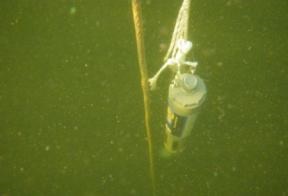
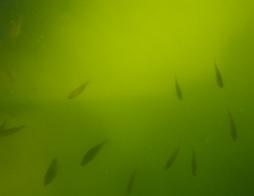
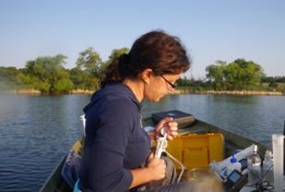
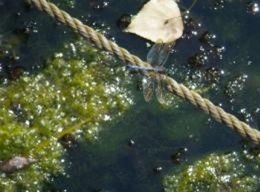
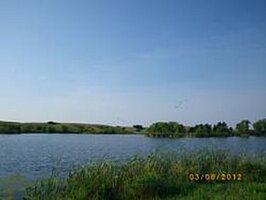
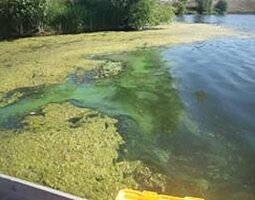
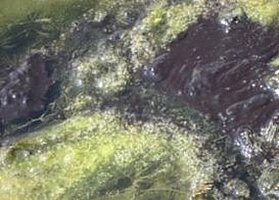
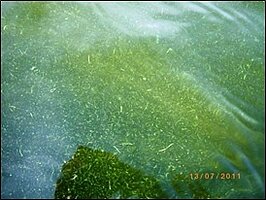

Wei Lin
Civil & Environmental Eng.
Office: Civil/Ind Eng 201D
Telephone: 701-231-6288
Email: wei.lin@ndsu.edu


